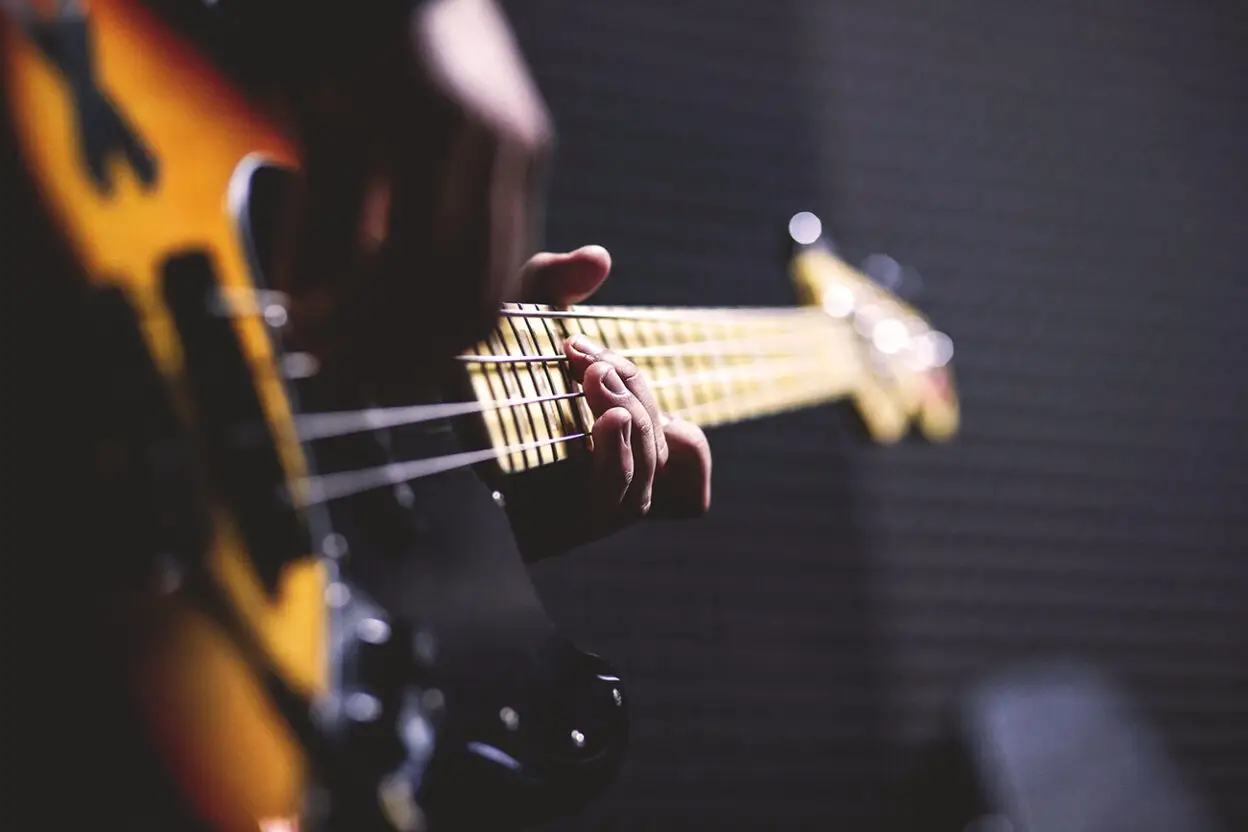Choosing the right bass guitar can be daunting for musicians due to the vast array of options available. Understanding what to focus on is essential to simplifying the decision-making process. This guide will help you navigate the various factors to find an instrument that perfectly matches your style and preferences.
Understanding Different Bass Types
Bass guitars come in various types, each with distinct features that can influence your choice. Electric bass guitars are celebrated for their versatility across different music genres, thanks to their solid body designs that minimize feedback and offer a broad spectrum of tones. In contrast, acoustic bass guitars are known for their resonant sound, which makes them ideal for performances that do not require amplification. Semi-acoustic and fretless basses provide unique tonal qualities that cater to specific musical styles and personal preferences.
Determining the Purpose
Before purchasing a quality bass for sale, it is essential to consider how you intend to use it. Are you planning to record in a studio, perform live, or use it for casual practice sessions? Identifying the primary purpose of the instrument can help narrow down your options. A bass that delivers a wide range of tones and clear sound quality is essential for studio work. On the other hand, live performances require a sturdy and reliable instrument that can withstand the rigors of touring. As a casual player, you might prioritize balancing quality and affordability to suit your practice needs without overspending.
Considering the Number of Strings
Another essential factor is the number of strings on a bass for sale. Standard bass guitars typically feature four strings suitable for various music styles. However, five and six-string basses are also available for musicians who wish to explore a more excellent range of notes and tones. Adding extra strings can provide more versatility, which allows for deeper bass lines and extended range—particularly useful in genres that demand a richer sound.
Exploring Body and Neck Shapes
The design of the body and neck of a bass guitar significantly affects its playability and comfort. Bass guitars come in various shapes, from contoured designs that fit comfortably against the body to more traditional larger shapes that offer a classic look. The shape of the neck also plays a crucial role in how the instrument feels in your hands. Slim necks are more accessible for those with smaller hands or who prefer faster playing, while thicker necks provide a more substantial grip that some players find more comfortable for longer sessions. Choosing a body and neck shape that suits your playing style can enhance your overall experience.
Selecting the Right Tonewoods
The type of wood used in constructing a bass guitar influences its sound and feel. Common tonewoods include alder and ash, favored for their balanced tones that work well across various styles. Mahogany is another popular choice, known for its deep undertones for jazz and blues music. Many often prefer Maple due to its bright tonal characteristics for genres that require clear and precise notes. Understanding the acoustic properties of different woods and matching them with your musical preferences will help you select a bass guitar that delivers the desired sound.
Evaluating Pickups and Electronics
Pickups and electronics are critical components that shape the sound of a bass guitar. Passive pickups provide a warm and natural tone. In contrast, active pickups offer a more comprehensive frequency range and increased output power, which makes them suitable for louder environments and complex sound systems. When choosing between single-coil or humbucking pickups, consider the type of sound you want to achieve. Single-coil pickups are known for their bright and clear tones, whereas humbucking pickups reduce noise and deliver a fuller, more robust sound. Selecting the right pickups and electronics can significantly enhance your bass guitar’s performance and versatility.
Setting a Budget
Establishing a budget is essential when shopping for a bass guitar. Prices can vary widely, so it’s necessary to determine how much you are willing to spend. Beginners might prefer entry-level bass guitars that offer good quality at an affordable price, as these guitars allow them to start playing without a significant financial commitment. As your skills progress, you may want to invest in higher-end models that provide better craftsmanship and additional features to support your growth as a musician. Balancing your budget with your needs and aspirations will help you make a sound financial decision while acquiring an instrument that meets your requirements.
Testing Before Purchase
Trying out different bass guitars before purchasing is crucial to choosing the right instrument. Visit music stores to handle various models and pay attention to factors such as the weight, neck comfort, and overall feel of the bass. Listening to how each instrument sounds through different amplifiers can also provide valuable insights into its tonal qualities and suitability for your style of play. Hands-on testing allows you to assess the playability and comfort of the bass, which will help you make an informed decision that aligns with your personal preferences and musical needs.
Conclusion
Selecting the right bass guitar involves a combination of personal taste and informed decision-making. You can narrow down your options by understanding the different types of basses, determining your intended purpose, considering the number of strings, and exploring body and neck shapes. Paying attention to the tonewoods, pickups, and electronics will ensure you choose an instrument that delivers the desired sound. Setting a budget and testing various models in person are also essential steps. Evaluating these factors will help you find a bass guitar that fits your musical style and supports your growth and enjoyment as a musician.



Be the first to comment